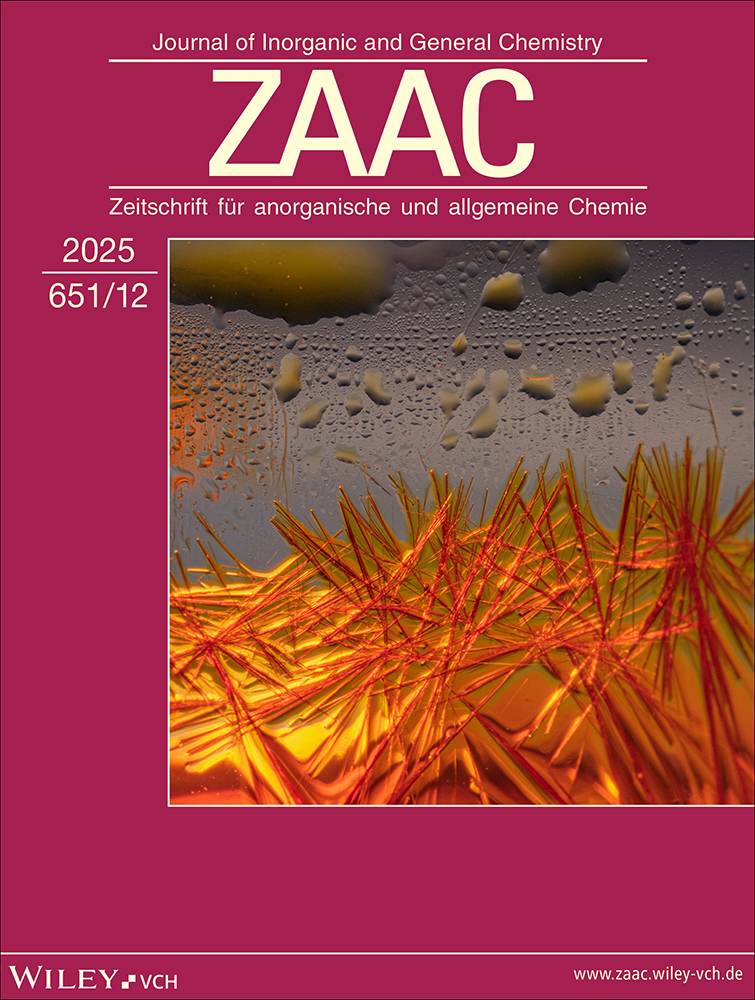Die Kristallstruktur von Pb5(GeO4)2SO4 und Pb5(GeO4)2CrO4, zweier Bleiapatite mit unbesetzten Halogenlagen
Abstract
dePb5(GeO4)2SO4 (a = 1005,8; c = 741,6 pm) und Pb5(GeO4)2CrO4 (a = 1010,5; c = 742,8 pm) sind hexagonal, Raumgruppe P63/m, Z = 2 Formeleinheiten. Sie kristallisierten in der Apatitstruktur, wobei die Halogenlagen in den Kanälen nicht besetzt werden. Diese Besonderheit ist durch die Pb2+-Ionen auf der Lage 6h bedingt. Ihre freien Elektronenpaare sind stereochemisch wirksam und weisen in die Kanäle hinein. Auch bei den Pb2+-Ionen auf der Lage 4f ist ein stereochemischer Einfluß des freien Elektronenpaares erkennbar.
Abstract
enCrystal Structures of Pb5(GeO4)2SO4 and Pb5(GeO4)2CrO4, Two Lead Apatites with Vacant Halogen Sites
Pb5(GeO4)2SO4 (a = 1005.8; c = 741.6 pm) and Pb5(GeO4)2CrO4 (a = 1010.5; c = 742.8 pm) are hexagonal, space group P63/m, Z = 2 formula units. They crystallize with the apatite structure type. The halogen positions in the channels are not occupied. This pecularity is caused by the Pb2+ ions on the 6h positions. Their lone pairs of electrons are sterically active, being directed into the channels. The electron lone pairs of the Pb2+ ions of the 4f positions also show sterical effect.




